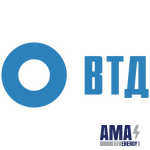In-line Diagnostics
Magnetic Diagnostics
The magnetic method of in-line diagnostics is based on the registration of magnetic fields of scattering generated during the magnetization of the pipe wall. The essence of the method is that when there is a defect in the pipe wall, part of the magnetic flux is scattered by the defect, which can be detected by a sensor located near the pipe surface.
The wall of the pipeline is magnetized by flaw shells using permanent magnets located on a cylindrical yoke and flexible metal brushes that transmit magnetic flux from the magnets to the pipe wall
For pipeline inspection, we apply the principles of multi-angle inspection.
Magnetic diagnostics has the following advantages:
- high sensitivity to metal loss defects
- high resolution
- high stability of control results
- visibility of control results
- minimum number of false positives
- high reliability and manufacturability of the design of in-line flaw detectors
Magnetic flaw detection is carried out by a set of in-line flaw detector devices
diameters from 219mm (8 ") to 1420mm (56"), including:
- DMT Longitudinal Magnetization Flaw Detector (MFL)
- DMTP Transverse Magnetization Flaw Detector (TFI)
- Introscope (MFL +)
DMT Flaw Detectors (MFL)

Tasks
DMT longitudinal magnetization flaw detectors are designed to detect and record:
- corrosion defects (general corrosion, cavity, ulcer, transverse groove)
- mechanical damage to the transverse orientation
- transverse metallurgical defects
- transverse stress corrosion cracks
- defects of annular (assembly) welds
Features
High-resolution magnetic flaw detectors such as DMT (MFL) are used to record and measure longitudinal scattering magnetic flux signals at the location of defects in the walls of the pipeline.
DMTP flaw detectors (TFI)

Tasks
DMTP transverse magnetization flaw detectors are designed to detect and record:
- corrosion defects
- mechanical damage to the longitudinal orientation
- longitudinal metallurgical defects
- longitudinal stress corrosion cracks
- factory weld defects
Features
The unique design of the magnetization system of a transverse magnetization flaw detector DMTP (TFI), multiplied by 20 years of experience at Gazprom and a wealth of statistical material (over 17,000 longitudinal crack zones have been identified over the years of in-tube equipment operation) allow us to achieve (the highest) reliability indicators for identifying longitudinally oriented cracks, which are the most dangerous defect in main pipelines.
Introscopes (MFL +)

Tasks
MFL + magnetic introscopes are designed to detect and record:
- corrosion defects on the inner surface of the pipe
- metallurgical defects emerging on the inner surface
- defects of circumferential, longitudinal and spiral welds
- pipeline geometry defects
Features
Magnetic in-tube introscopes of the MFL + type are able to detect with photographic accuracy all defects of any orientation on the inner surface of the pipe walls, including defects in the geometry of the pipeline. The accuracy of detecting defects and assessing their sizes on the inner surface of the pipes does not depend on the thickness of the pipe walls.
Magnetoacoustic diagnostics
Magnetoacoustic in-tube diagnostics is based on an electromagnetoacoustic (EMA) method of exciting and receiving ultrasonic shear vibrations in the metal of a controlled pipeline, which allows diagnostics to be performed without contact fluid.
Magnetoacoustic flaw detectors

Tasks
Magnetic-acoustic flaw detectors are designed for:
- identifying zones of differently oriented cracks at an early stage of development, both in the base metal and in the welds
- registration of metal loss defects and delaminations, assessment of their depth by the acoustic method, monitoring the growth of corrosion defects
- type determination and assessment of the condition of the outer insulation coating
Features
The combined magnetoacoustic flaw detectors of the DMT (B) -A and DMTP (B) -A series combining ultra-high resolution magnetic sensor subsystems and multi-angle EMA ultrasonic sensor subsystems provide the most complete (reliable) information about the state of the pipeline. The absence of the need for liquid contact of the EMA transducers makes it possible to use the combined magnetoacoustic flaw detectors to monitor both oil and gas pipelines:

